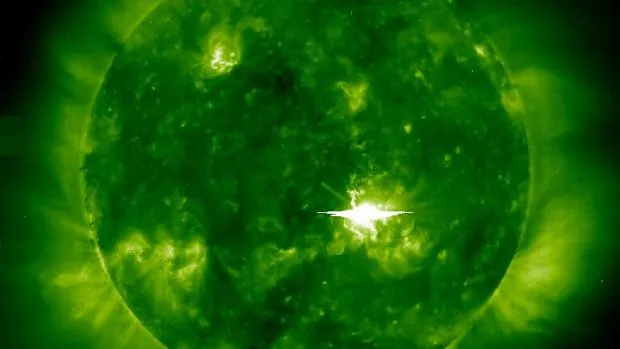Solar Flares

A powerful solar flare erupts near the middle of the Sun, as captured in this ultraviolet image.
NOAA
Solar flares are huge explosions of electromagnetic radiation from the Sun. A flare appears as a sudden, intense brightening of a region on the Sun, lasting several minutes to hours.
Flares occur when intense magnetic fields on the Sun become too tangled. Like a rubber band that snaps when it is twisted too far, the tangled magnetic fields release energy when they snap. The energy emitted by a solar flare is more than a million times greater than the energy from a volcanic eruption on Earth!
Observing Solar Flares
Although solar flares can be visible in white light, they are often more readily noticed via their bright X-ray and ultraviolet emissions. The picture below shows a solar flare captured in six different wavelengths of ultraviolet light, which is invisible to the human eye.

NASA captured the first moments of a solar flare, seen as the bright spot on the left of the Sun, at six different wavelengths. Hot solar material can be seen above the active solar flare region in the Sun's corona.
NASA
Solar flares burst forth from intense magnetic fields in the vicinity of active regions on the Sun and are most common during times of peak solar activity. Coronal mass ejections often accompany solar flares, though scientists are still trying to determine exactly how the two phenomena are related.
Solar Flares Can Cause Radio Blackouts on Earth
When a strong enough flare occurs, charged electrons in the upper atmosphere can temporarily disrupt radio waves on the side of Earth that is facing the Sun, either degrading or completely absorbing them. This results in a radio blackout where certain frequencies of radio waves are completely absent for a short period of time.